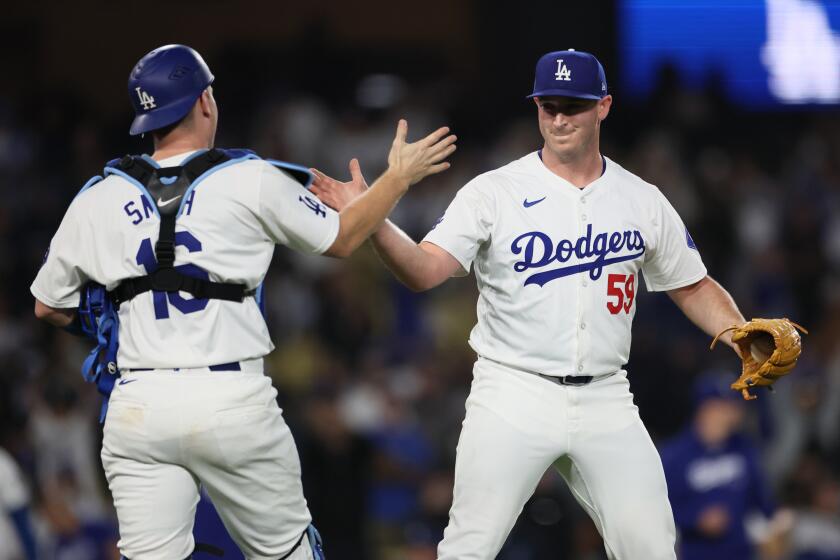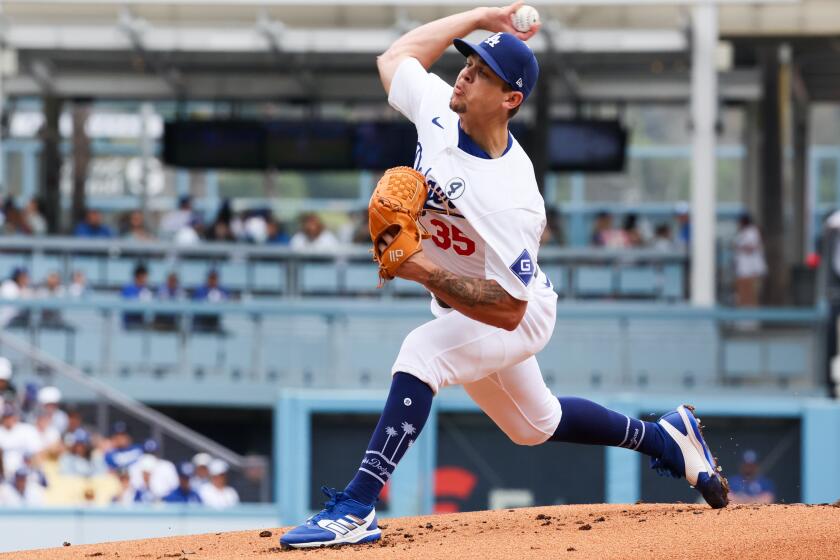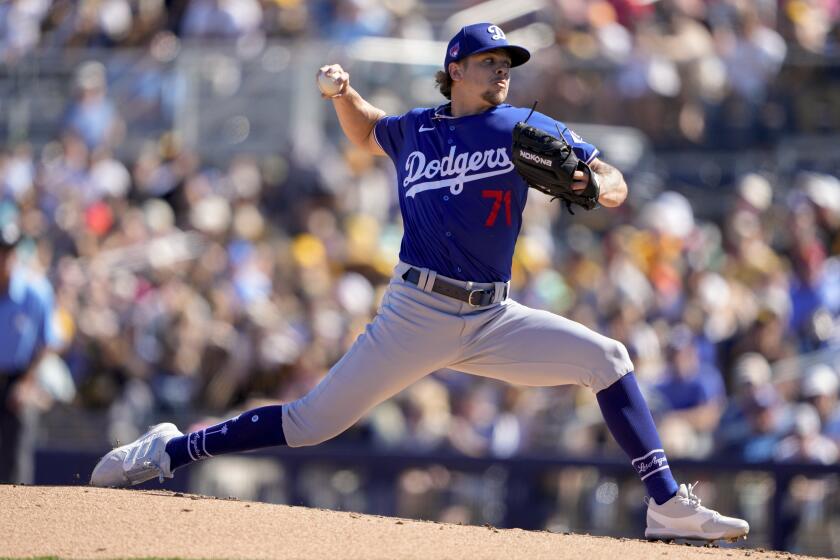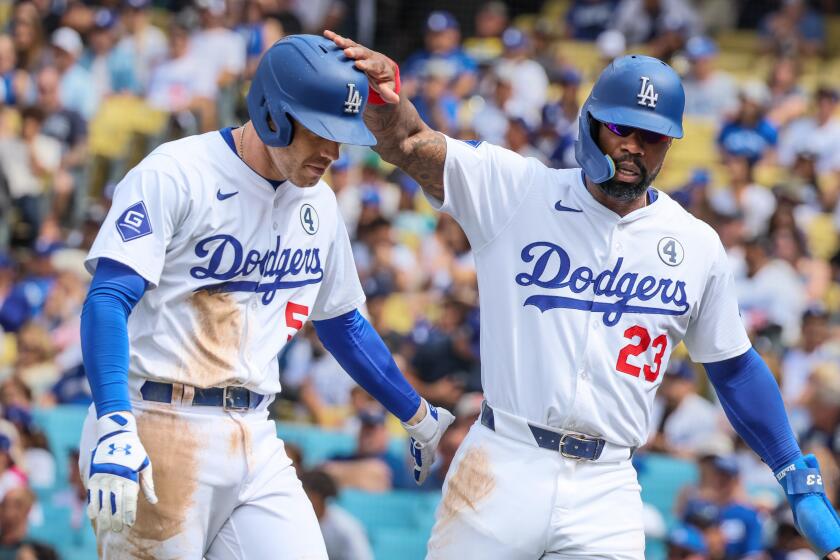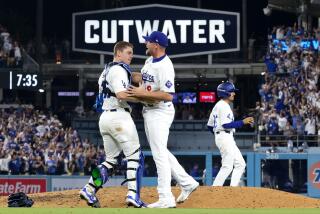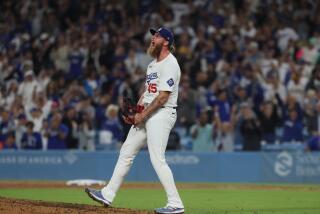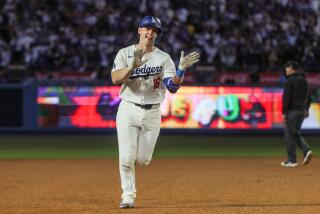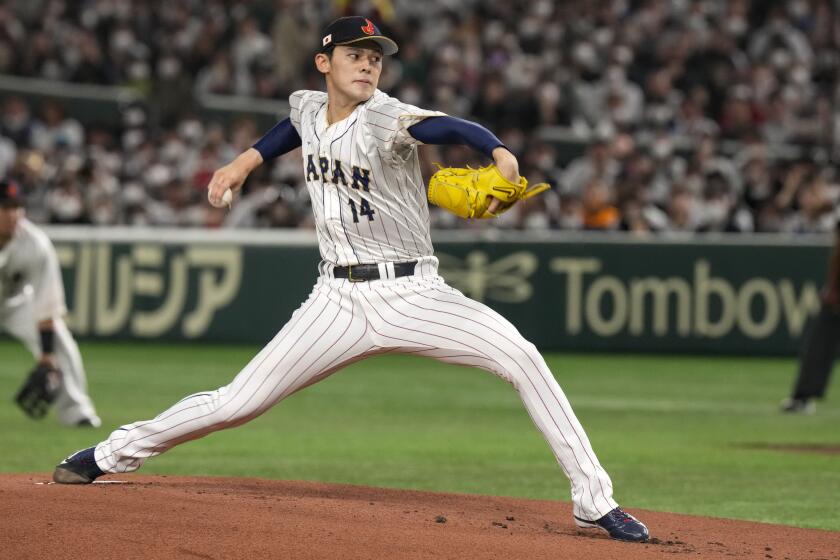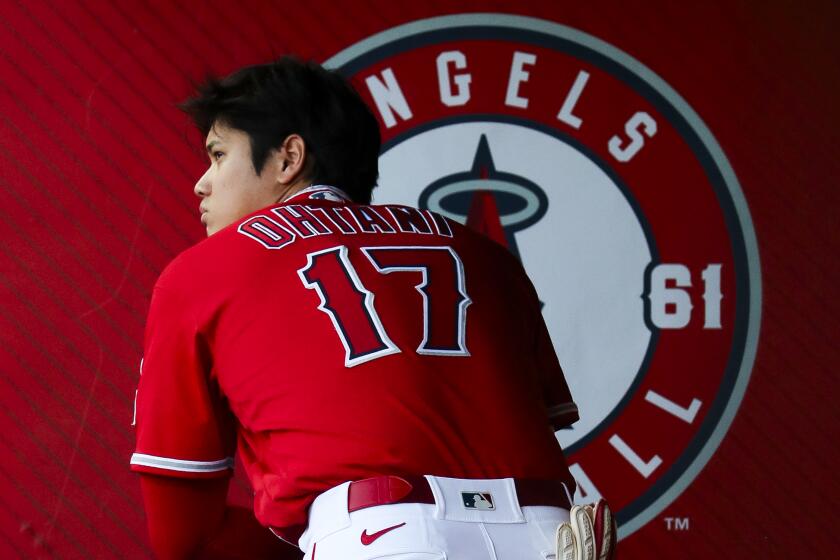
Dave Roberts ran out of superlatives recently when praising the performance of rookie starting pitcher Gavin Stone, and the transformation he has undergone over the past calendar year.
So, as he extolled Stone at length during a scrum with reporters last week, the Dodgers manager racked his brain for a lofty comparison instead.
“I’m not saying he’s Orel Hershiser,” Roberts cautioned, before evoking the nickname of a club legend to describe its new breakout star. “But he’s a bulldog … It’s a little Orel Hershiser-esque.”
No one will confuse Stone with Hershiser, the original Dodgers “Bulldog,” by appearance. Stone is listed at 6-foot-1, lacking the physical stature of Hershiser’s lanky 6-foot-3 frame on the mound.
There is certainly no mistaking their career accolades, either. Hershiser was a Cy Young Award winner, three-time All-Star and 1988 World Series champion with the Dodgers, with whom he spent 13 of his 18 MLB seasons. Stone has a grand total of 19 MLB outings under his belt, still barely a year removed from his big-league debut.
Saturday’s win over Colorado marked the first time this season the Dodgers deployed the bullpen trio of Daniel Hudson, Blake Treinen and Evan Phillips.
An apples-to-apples analogy, this is not.
However, when Hershiser was asked about the comp this weekend — a few days before Stone’s latest masterpiece performance Sunday, five scoreless innings against the Colorado Rockies, helped him improve to 6-2 with a 2.90 ERA — the franchise icon and current television analyst recognized the connection.
Stylistically, they both pitch to contact with athletic deliveries. Competitively, they carry an unflappable edge every time they take the mound.
“I understand why Dave is saying he looks a little bit like me,” Hershiser said, humbled by the comparison.
But, in Hershiser’s eyes, the more impressive contrast is between the struggles Stone endured when he was first called up to the majors last year, and the many ways he has adjusted to suddenly flourish now.
“I always thought he’d be able to do it,” Hershiser said. “Because of the way his body moves. And the way he tries, so hard, to be good.”
When Stone first joined the Dodgers last season, Hershiser saw why club officials were excited by his potential.
The former fifth-round draft pick had a smooth, natural delivery, generating mid-90s-mph velocity from a relatively undersized frame.
“One of the first things I recognized with him was his athleticism,” Hershiser said. “That really gives me a lot of confidence in a pitcher. Because athleticism then leads to being able to make adjustments.”
Stone also put seemingly effortless movement on the ball, especially with his signature pitch, a changeup, that could flutter out of the strike zone at the last second.
Gavin Stone continues to shine in his sophomore season, holding the Colorado Rockies to four hits over five scoreless innings in a 4-0 win over Colorado.
“It was like, ‘Wow. That ball, with that delivery, naturally moves,’” Hershiser recalled of first watching Stone. “I thought [that’s gonna get] a lot of weak contact.”
Four decades ago, Hershisher succeeded in similar ways.
Like Stone, Hershiser never had “unhittable” velocity. Hershiser wasn’t much of a strikeout artist, either, never amassing more than 190 in a single season.
“My style of pitching, I didn’t really try for a strikeout,” Hershiser said. “Until it was part of the game and necessary, like not letting a runner move from second to third, or not scoring a run from third with less than two outs.”
Instead, Hershiser stuck to his strengths. He attacked the strike zone with late-biting pitches. He kept batters off balance and induced weak contact. He racked up quick outs and gobbled up innings, leading the National League in innings pitched three straight years from 1987-1989 (including his record-setting 59-inning scoreless streak in 1988, the year he won the Cy Young and World Series).
“People never believe how often I tried to just throw the ball down the middle, with movement,” Hershiser said. “Because if you have movement, it’s probably not gonna end up there.”
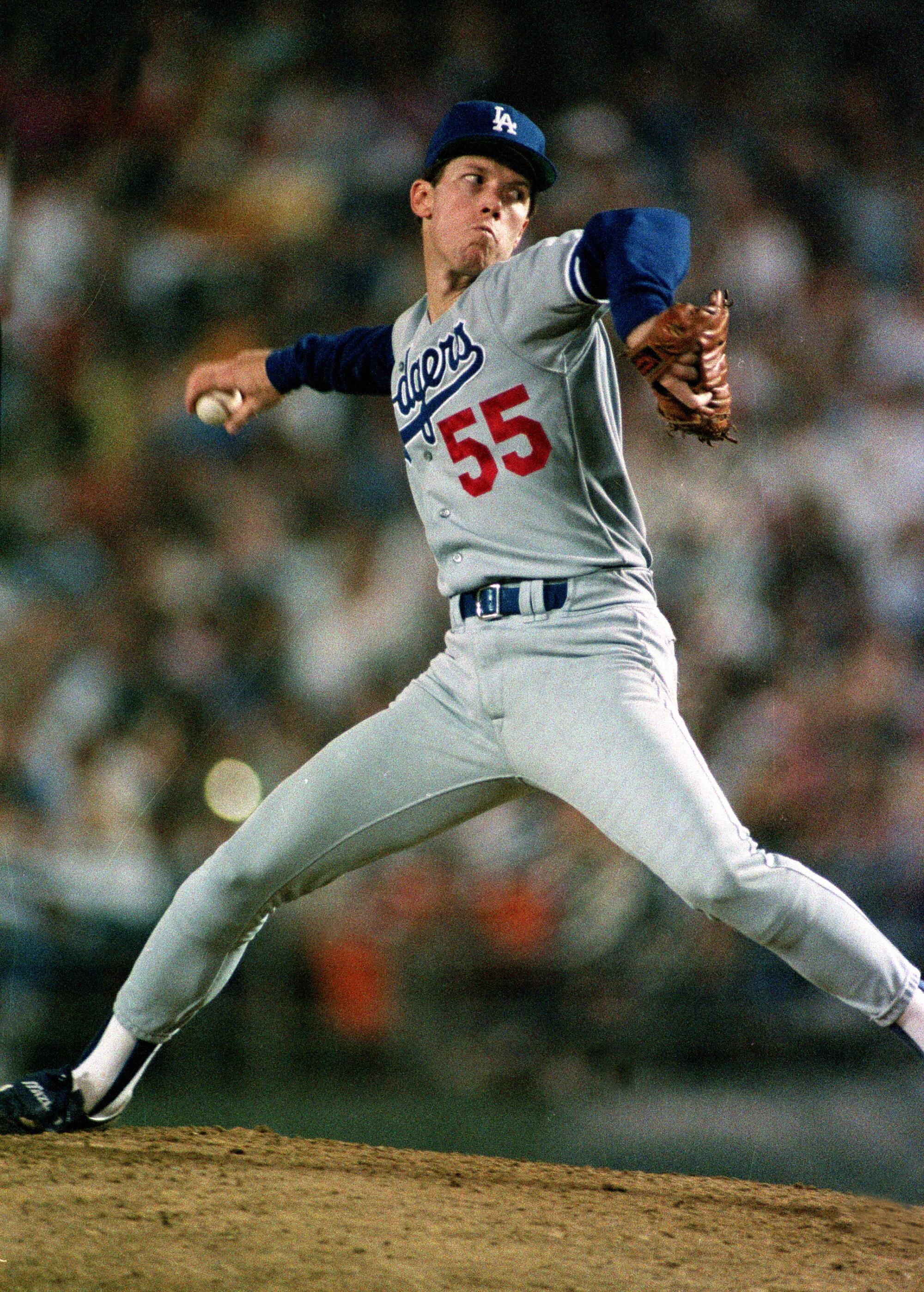
Last year, Stone failed to replicate any such game plan.
He, too, tried to go after hitters over the plate. He, too, was happy to pitch to contact in search of quick outs.
The only problem: Stone got hammered repeatedly in his first MLB foray, giving up 17 runs and 23 hits over 10 innings in three starts early last season — including a disastrous two-inning, seven-run start against the Tampa Bay Rays.
“At the time, I felt like I couldn’t compete at all,” recalled Stone, who was sent back down following that final appearance on May 28.
“When you give up that many runs that many times,” he added, “you gotta change something.”
One big issue, the Dodgers realized in hindsight, was that Stone was tipping his pitches, allowing hitters to stay off his changeup and wait for fastballs over the plate.
Equally problematic, though, was that too many of those fastballs — all of them of the more straight-line, four-seam variety — were too hittable at the MLB level.
Stone wasn’t just failing to miss bats. Almost everything he threw, it seemed, was easy for opponents to square up on the barrel.
With Walker Buehler likely to miss a month (or more) at the start of the season, the Dodgers have an open competition for the final spot in their rotation.
“He didn’t have the same movement on some of his pitches for various reasons,” pitching coach Mark Prior recalled.
So, when the Dodgers sent Stone back to triple-A, their pitching department recommended a significant arsenal change.
Instead of throwing only four-seam fastballs, Stone added a sinker and a cutter to his repertoire.
The sinker, which utilizes a two-seam grip he previously used in his college days at Central Arkansas, features a late left-to-right break that complements his changeup, making both pitches more difficult to differentiate.
The cutter darts the other direction, giving him a weapon to throw in against left-handed hitters who had previously just looked for off-speed pitches away.
“He almost reverted back to the pitcher he was when he was younger,” Roberts said, describing the new pitch mix as a better fit for Stone’s skill set. “Miss-hit balls, lack of hard contact, getting your defense involved, and then getting swing and miss when you need to, that’s what he’s done … It’s just gotten back to like, he feels he can be who he intrinsically is as a pitcher.”
The changes didn’t take right away. Stone gave up 24 runs in his first four starts back in triple-A. He eventually returned to the majors, yet posted a 6.43 ERA over his final five outings.
Entering spring training, it was unclear what kind of role he’d have on a star-studded 2024 Dodgers team.
But — in another callback to Hershiser’s notorious relentlessness — the 25-year-old never wavered.
After Walker Buehler was placed on the injured list to start the season, Stone quickly earned the open rotation spot with a strong spring performance. After giving up eight runs in eight innings over his first two starts, he has given up two or fewer in seven of the last nine, and none in each of the last two.
Stone still isn’t striking out a ton of batters (his 18.6% strikeout rate is a slight improvement from last year, but remains well below the league average). He isn’t suddenly overpowering hitters, either, getting whiffs on only about one-quarter of opponents’ swings (which is right around MLB’s median mark).
However, he is limiting hard contact (less than one out of every three batted balls against him has eclipsed Baseball Savant’s threshold for “hard hit” contact, at least 95-mph exit velocity). He is pitching deep in games (among Dodgers pitchers, only Tyler Glasnow has topped Stone’s average start length of 5⅔ innings). And, entering Tuesday, his 2.90 ERA ranked sixth in the National League, placing Stone alongside Japanese stars Yoshinobu Yamamoto and Shota Imanaga, as well as last year’s No. 1 draft pick Paul Skenes, in the early season Rookie of the Year race.
The Dodgers’ wins over the Mets and Rockies do not answer some of the longstanding questions that continue to cloud their World Series aspirations.
“We’ve got great coaches,” Stone said, crediting the adjustments they suggested with his breakout form this year. “They give us confidence, one way or another, on the mound.”
Indeed, exactly one year removed from the nightmarish start in Tampa that prompted his arsenal changes, Stone pitched his best game as a big-leaguer against the New York Mets last week, spinning seven scoreless innings in the second game of a doubleheader.
When he followed that up with five more scoreless innings Sunday, Roberts couldn’t help but make the Hershiser comparison again.
“He’s sort of like a mini-bulldog out there,” Roberts said, noting how — like Hershiser — Stone only seemed to seek strikeouts when runners were on base, or a jam needed to be dealt with.
“He competes really well. He’s a smart player,” Roberts added. “He just understands how to kind of play the game within the game.”
More to Read
Are you a true-blue fan?
Get our Dodgers Dugout newsletter for insights, news and much more.
You may occasionally receive promotional content from the Los Angeles Times.

